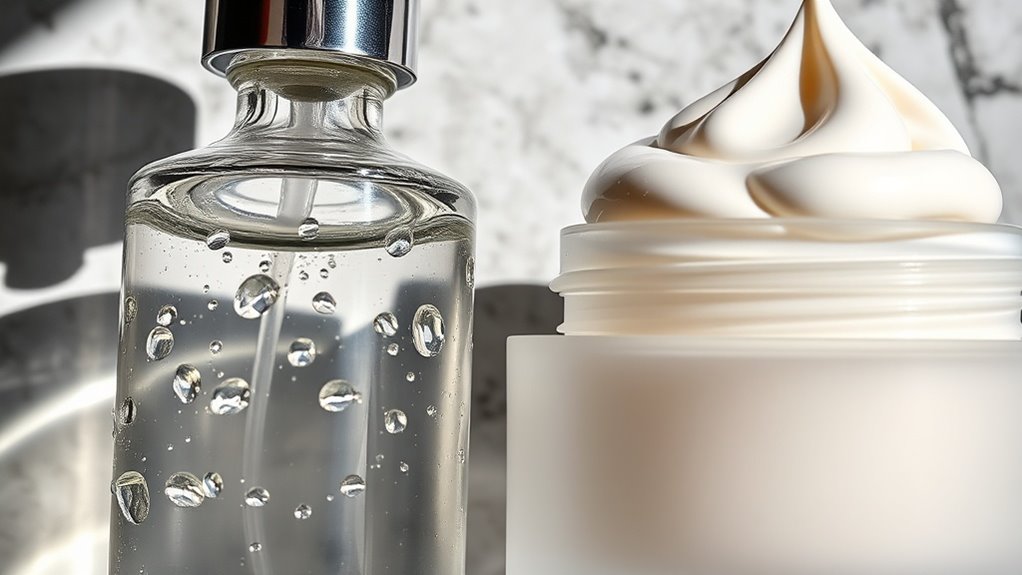How to Tell If Your Skin Is Actually Oily or Just Dehydrated
Determining whether your skin is oily or dehydrated is crucial for effective skincare. You might notice shiny areas, enlarged pores, or a greasy feel—signs of oily skin. Conversely, if your skin feels tight and looks dull with fine lines, dehydration could be the issue. Understanding these differences can guide your product choices. But how can you accurately assess your skin type to ensure you’re using the right treatments?
Understanding Oily Skin Characteristics
How can you identify oily skin? Oily skin typically presents a shiny appearance, especially on the forehead, nose, and chin—often referred to as the T-zone. You might notice enlarged pores and frequent breakouts due to excess sebum production.
Unlike dehydrated skin, which can feel tight and flaky, oily skin often feels greasy. You may also experience a consistent slickness throughout the day, even after cleansing.
To distinguish oily skin from dehydrated skin, pay attention to your skin’s texture and moisture levels. Regularly assessing these characteristics can help you tailor an effective skincare routine for your specific needs. Additionally, a simple test for oily or dry skin can provide quick insights into your skin type.
Identifying Signs of Dehydrated Skin
Dehydrated skin exhibits distinct signs that set it apart from oily skin.
You might notice tightness or a feeling of discomfort, particularly after cleansing. Your complexion may appear dull, with fine lines becoming more pronounced, especially around the eyes and mouth.
Additionally, you could experience rough patches or flakiness, even in areas typically not dry. Unlike oily skin, dehydrated skin often lacks a greasy sheen and may feel parched.
If you find that your skin reacts poorly to certain products, this could also indicate dehydration. Incorporating innovative remedies like hyaluronic acid or glycerin can significantly boost moisture retention and improve your skin’s overall health.
Recognizing these signs can help you address your skin’s hydration needs effectively.
Key Differences Between Oily and Dehydrated Skin
Understanding the key differences between oily and dehydrated skin is crucial for effective skincare.
Oily skin typically presents with excess sebum production, leading to a shiny appearance and enlarged pores. You might experience frequent breakouts.
In contrast, dehydrated skin lacks moisture, often feeling tight or flaky, regardless of oiliness.
Dehydration can occur in oily skin types, resulting in an imbalance.
While oily skin often feels greasy, dehydrated skin may feel rough or sensitive.
Identifying these distinctions helps you choose appropriate products and treatments, ensuring your skincare routine addresses your skin’s specific needs effectively and efficiently. Additionally, having benefits of oily skin can provide advantages such as a more youthful appearance and natural hydration.
Tips for Proper Skin Assessment and Care
Recognizing whether your skin is oily or dehydrated sets the foundation for effective skincare assessment and care.
Start by cleansing your face with a gentle cleanser to remove impurities. Observe how your skin feels after cleansing: tightness often indicates dehydration, while excess shine suggests oiliness.
Next, assess your skin’s moisture levels using a hydrating toner or serum; if your skin absorbs products quickly, it may be dehydrated. Additionally, understanding your skin type can help you choose the most suitable products for your unique needs.
Incorporate lightweight moisturizers for oily skin or richer creams for dehydrated skin.
Lastly, maintain a consistent routine, adjusting products based on seasonal changes to ensure optimal skin health and balance.





